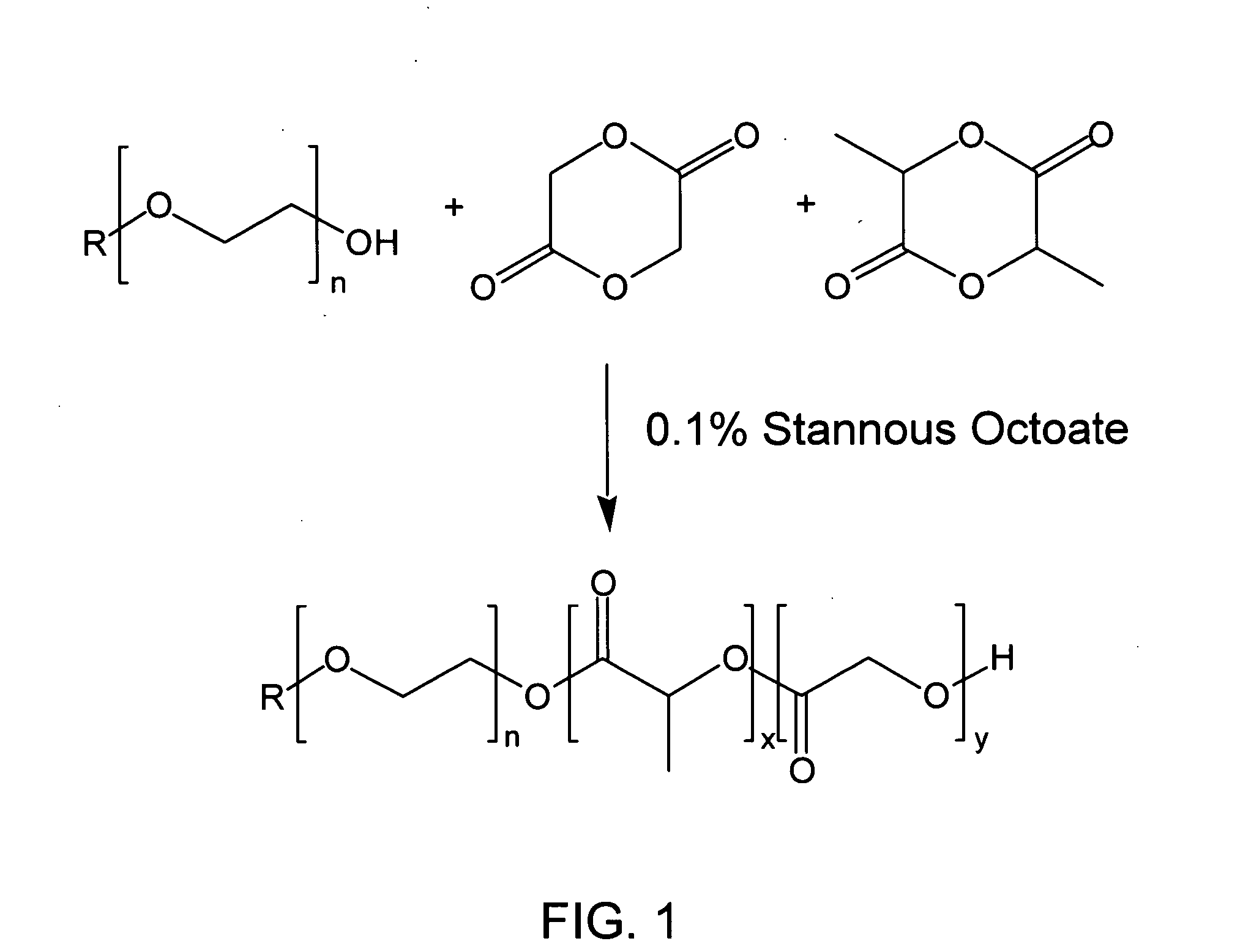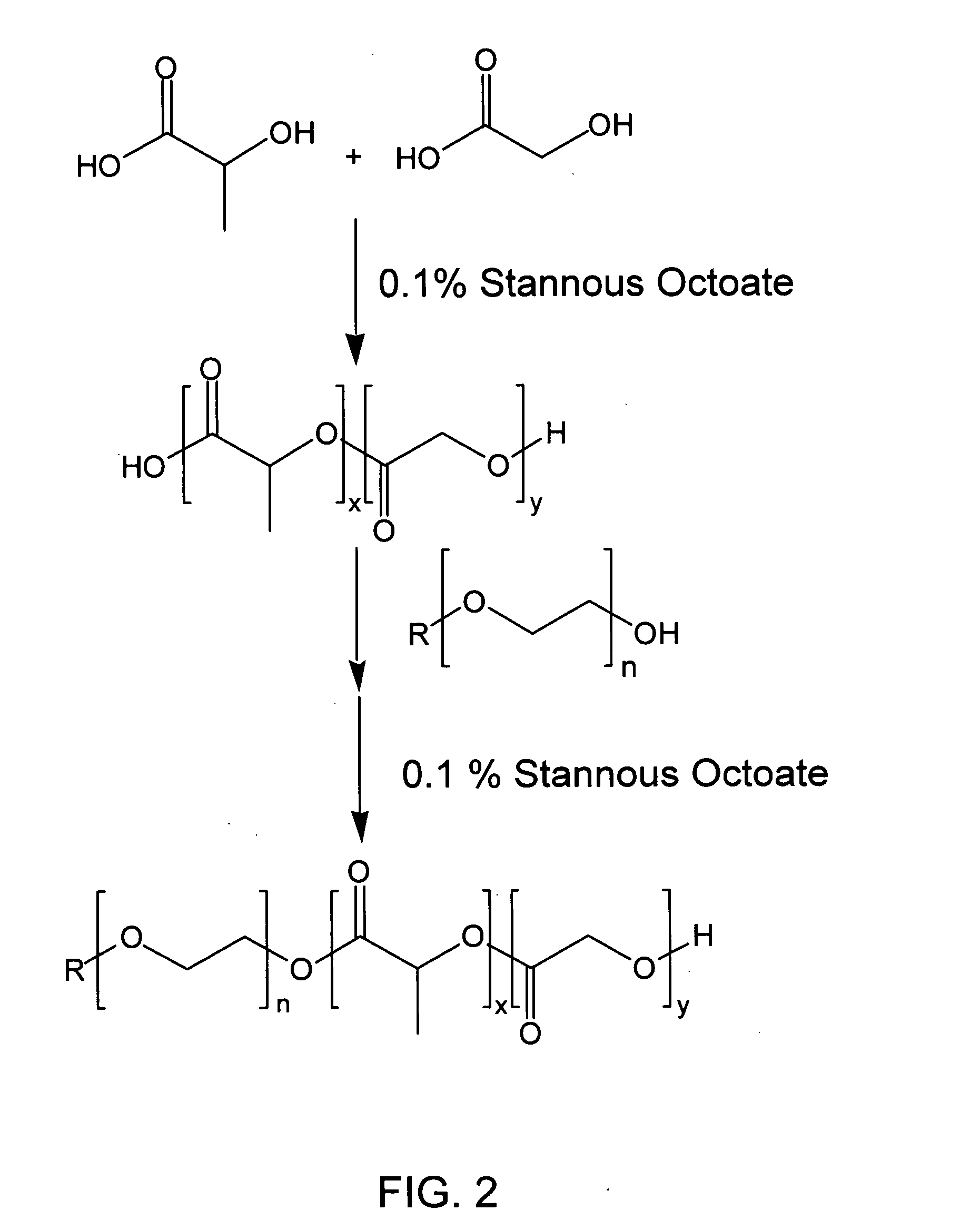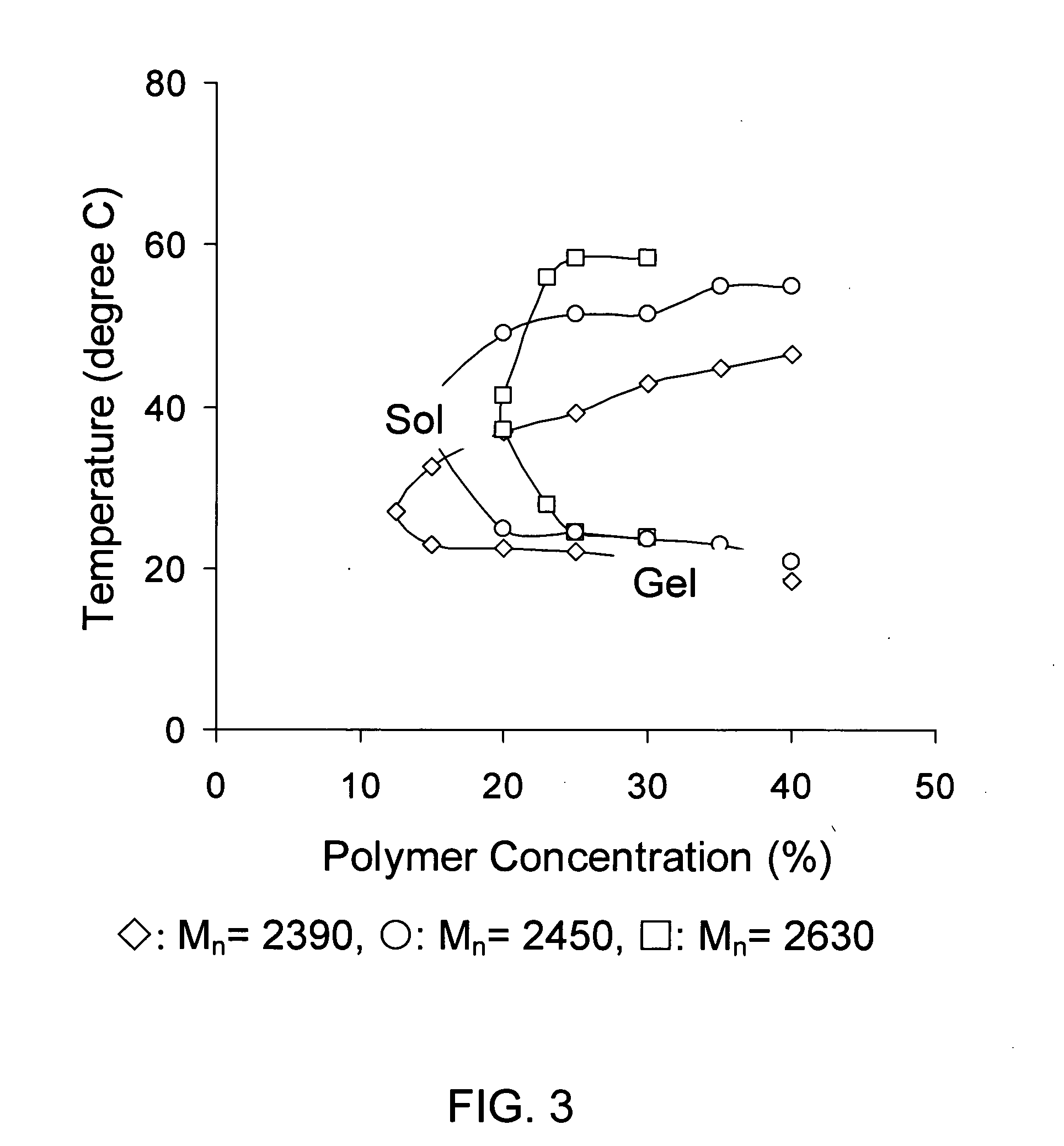Biodegradable diblock copolymers having reverse thermal gelation properties and methods of use thereof
a biodegradable diblock and copolymer technology, applied in the direction of powder delivery, pharmaceutical delivery mechanism, prosthesis, etc., can solve the problems of limited use of physical gels based on various physical interactions, and achieve good drug release characteristics
- Summary
- Abstract
- Description
- Claims
- Application Information
AI Technical Summary
Benefits of technology
Problems solved by technology
Method used
Image
Examples
example 1
Synthesis of MeO-PEG-PLGA Diblock Copolymer by Ring Opening Copolymerization
[0073] Following the reaction scheme given in FIG. 1, 50 g of MeO-PEG (Mw=550) was dried for 2 hrs at 100° C. under vacuum (5 mm Hg). 89.58 g of D,L-lactide and 28.15 g of glycolide were added to the flask and the reaction mixture was heated until the temperature reached 155° C. When the temperature of reaction mixture was 130° C., 0.04 g (700 ppm) of stannous octoate was added into the reaction flask using a 1 mL syringe. The progress of the reaction was followed by GPC (gel permeation chromatography). When the molecular weight of the copolymer showed no further increase, the reaction was stopped and the flask was cooled and any unreacted monomers were removed by vacuum distillation for 2 hrs.
example 2
[0074] Following the general procedure outlined in Example 1, other diblock copolymers were synthesized using the same PEG but varying the lactide and / or glycolide content. The properties of these diblock copolymers are listed in the following table:
TABLE 1Example AB Diblock Copolymers with Reverse Thermal Gelation PropertiesPEG-OMePLG / PEGL / GMn(calculated)Mn (GPC)Tsol-gelTmax viscTph. sepa5502.5875 / 251969239017.419.7-39.642.85502.8075 / 252090245020.824.4-49.151.55503.072 / 282200263023.125.1-53.958.17502.675 / 252700318038.243.1-52.856.07503.075 / 253000351052.355.1-71.3>77.0
[0075] It is to be noted that all of the polymers listed in the above table possessed reverse thermal gelation properties and the diblock copolymer concentrations for gelation properties were 23 wt % or 25 wt % in water. Molecular weight and gelation properties of diblock copolymer solutions have been characterized both by gel permeation chromatography (GPC) and the tube inversion method.
example 3
Synthesis of PLGA-PEG Diblock Copolymer by Condensation Copolymerization
[0076] The reaction scheme of diblock copolymer synthesis by condensation polymerization is presented in FIG. 2. Into a three necked flask, equipped with a nitrogen inlet, thermometer, and distillation head for removal of water, was placed DL-lactic acid and glycolic acid (3:1 mole ratio, respectively). The reaction mixture was heated at 155° C. under nitrogen, with stirring, at atmospheric pressure for three hours and then under reduced pressure (5 mm Hg) for 6 hrs. The progress of the reaction was followed by GPC. The reaction was stopped at the appropriate time and the polymer formed was purified by precipitation from a dichloromethane solution into a large excess of methanol. The residue was triturated with methanol and dried under vacuum (0.05 mm Hg) at 23° C. The PLGA oligomer was characterized by GPC, IR and NMR. The resulting PLGA oligomer had a number average molecular weight (Mn) of 1910 and an Mw / Mn...
PUM
| Property | Measurement | Unit |
|---|---|---|
| molecular weight | aaaaa | aaaaa |
| molecular weight | aaaaa | aaaaa |
| molecular weight | aaaaa | aaaaa |
Abstract
Description
Claims
Application Information
 Login to View More
Login to View More - R&D
- Intellectual Property
- Life Sciences
- Materials
- Tech Scout
- Unparalleled Data Quality
- Higher Quality Content
- 60% Fewer Hallucinations
Browse by: Latest US Patents, China's latest patents, Technical Efficacy Thesaurus, Application Domain, Technology Topic, Popular Technical Reports.
© 2025 PatSnap. All rights reserved.Legal|Privacy policy|Modern Slavery Act Transparency Statement|Sitemap|About US| Contact US: help@patsnap.com



